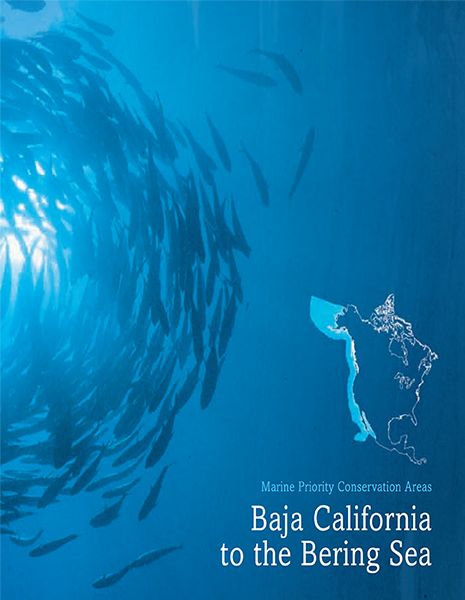Marine Priority Conservation Areas
Baja California to the Bering Sea
Marine Priority Conservation Areas
Baja California to the Bering Sea
Description
From the Gulf of California, with its deep canyons, nutrient-rich upwellings and high levels of endemism, to the 20,000 kilometers of bays, inlets and inland drainage systems of the Pacific Northwest and the high productivity of the Bering Sea, the west coast of North America is home to unique and important shared marine environments. It is also home to a great number of shared marine species—such as Pacific gray and blue whales, leatherback sea turtles, bluefin tuna, black brant geese and Heermann’s gulls—that migrate thousands of kilometers, moving across national borders without hesitation. Hence, be it through shared species or ecosystems, the marine environments of Canada, Mexico and the United States are intimately linked. Accordingly, action or inaction on one side of a border will have consequences for the shared living organisms occupying ecosystems with no definite boundaries.
Identifying priority conservation areas (PCAs) is one of several marine initiatives sponsored by the Commission for Environmental Cooperation (CEC) of North America as part of its Strategic Plan for North American Cooperation in the Conservation of Biodiversity. This report describes the process of identifying these PCAs—areas of trinational importance due to their ecological significance, threatened nature and opportunities for conservation—which are in need of biand trinational cooperative action for their successful conservation. Iteratively over the course of this project, the definition of PCAs was refined to reflect the goals of the CEC process, the variable nature of data available in the three nations, and the spatial scale of the Baja California to Bering Sea (B2B) region. Other initiatives advance a common framework for mapping marine ecoregions, identify and help protect species of common conservation concern, and work to provide a common understanding as well as a coordinated and complementary use of institutions, initiatives and tools in each country so as to implement an integrated Marine Protected Area (MPA) Network in North America. This PCA initiative seeks to detail where conservation action is immediately necessary. This identification charts a course for future conservation alliances and action in the B2B region.
Additional Information
